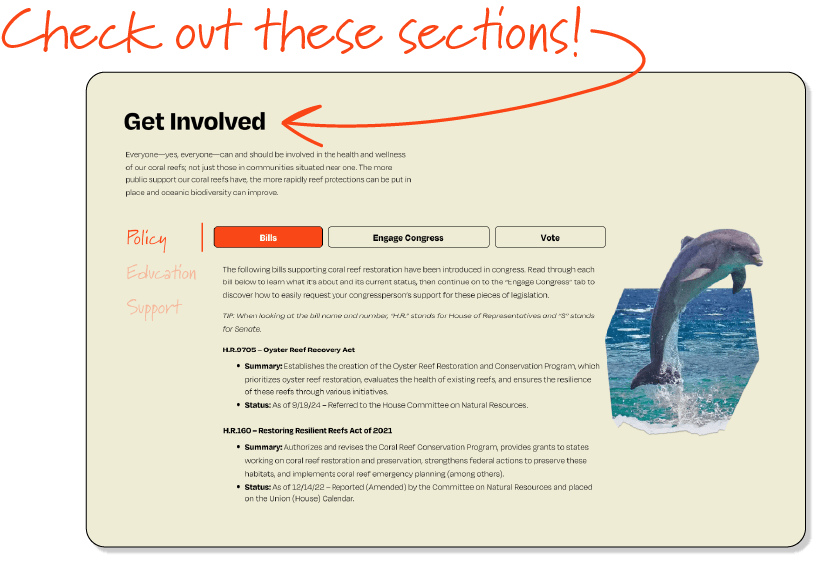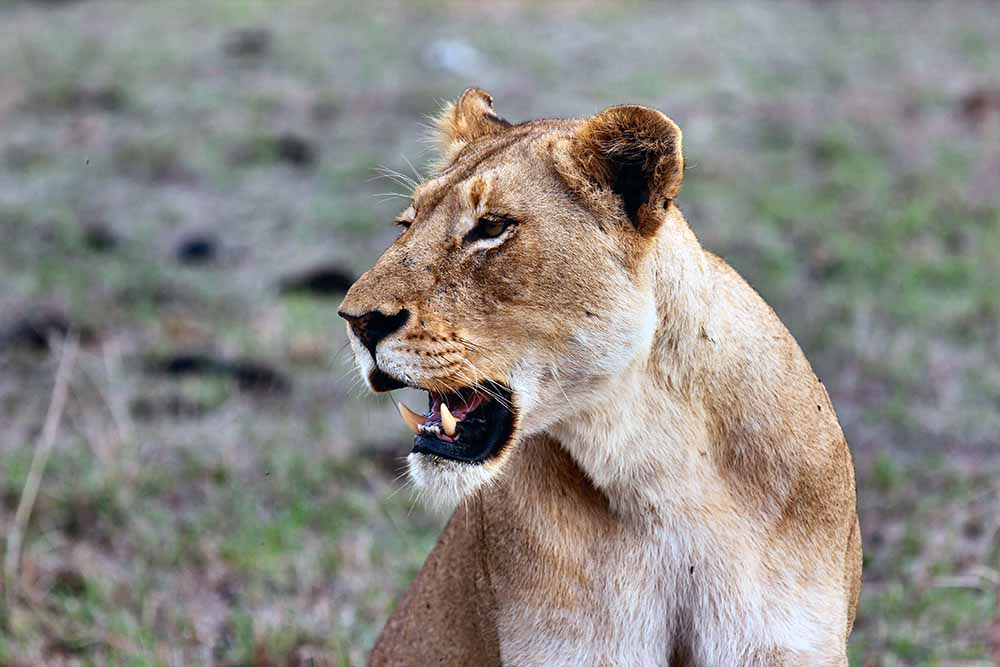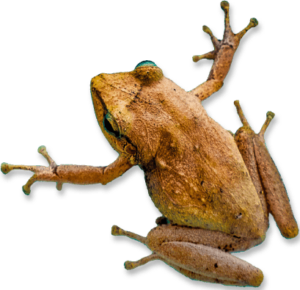SOLUTION
Endangered Species Protection
Advancing 30×30 goals by preserving wildlife biodiversity
Created in partnership with
Born Free USA
What is endangered species protection?
In order to be protected under the United States’ Endangered Species Act, a species—either animal or plant—must meet at least one of these factors. For more information on endangered species categorization, the International Union for Conservation of Nature (IUCN) has an even more detailed definition of what constitutes an endangered animal species.1”Red List Categories and Criteria,” International Union for Conservation of Nature and Natural Resources ≫
Protecting species from extinction means addressing the immediate threats against them.2“Recovery of Endangered and Threatened Species,” NOAA Fisheries ≫ The Endangered Species Act was passed in 1973, and created an initial framework to measure species endangerment as well as institute protections for these species in the United States. Since then, more than 1,600 species in the U.S. alone have been listed as either threatened or endangered, with as many as one-third of all U.S. species believed to be at risk.
So, why does this matter? Biodiversity, the variety of life on earth, is critical for the health of whole ecosystems—something we, as human beings, rely on heavily for food, fresh water, oxygen, and other resources—and endangered species are a clear indicator that environmental health is suffering.
Currently, efforts to protect and recover endangered species include:
- Protected Areas
- Limitations on pesticide usage
- Species rehabilitation and release
- Species reintroduction
- Reduction of human-wildlife contact
Traditional Indigenous Knowledge
Despite more than one million species facing extinction around the world, it has been noted that species decline is occurring at a much slower rate (if at all) on Indigenous Peoples’ lands.3 “Northern Plains tribes bring back their wild ‘relatives’,” AP News ≫ Why? Because of Tribal natural resource programs, Traditional Ecological Knowledge (TEK), and stewardship.
In the U.S., the Lower Brule Sioux Tribe of South Dakota successfully reintroduced the critically endangered black-footed ferret to their Tribal lands, creating management plans that prioritized the species and its ecological role. This work, which began in 2006, continues today throughout many western states, including Montana, where members of the Aaniih Nation are reintroducing and protecting these small predators. The Blackfeet Nation in Montana have been making similar strides with Bison restoration, recently releasing the first wild Bison to roam the land in 150 years.4“Blackfeet Bring Bison Home to Chief Mountain,” Flathead Beacon ≫; “Indigenous people are the world’s biggest conservationists, but they rarely get credit for it,” Vox ≫
In other parts of the world, examples of Indigenous stewardship include the Gunadule people of Panama, whose work to protect their coral reefs has made their island the most biodiverse in the region, as well as the Nari Nari people of New South Wales, Australia who have been integral to the return and abundance of native species such as golden perch and black swans.5“How Returning Lands to Native Tribes Is Helping Protect Nature,” Yale Environment 360 ≫; “How Wildlife Refuges Improve Water Quality,” U.S. Fish & Wildlife ≫

South Dakota’s Lower Brule Sioux Tribe reintroduced the critically endangered black-footed ferret to Tribal lands. (IMAGE: U.S. Fish & Wildlife Service)
Endangered Species and Climate Change
Biodiversity helps ecosystems adapt to a changing climate. However, as these changes become more rapid and other stressors influenced by human activity, such as habitat loss, come into play, ecosystems are unable to keep up.
A warming climate leads to more extreme temperature and weather patterns, such as droughts and flooding, and these ecological tipping points can lead to drastic change, forcing species to move or die. Already threatened or endangered species are particularly at risk due to their limited population and territory sizes. Polar bears are losing sea ice habitat, monarch butterflies are experiencing disruptions in migration patterns, and golden toads are now presumed extinct due to climate change-induced drought.6”The Problem Has a Solution,” Polar Bears International ≫; ”Millions of monarch butterflies have gone missing, and there is one thing humans can do to help,” BBC ≫; ”Golden Toads,” International Fund for Animal Welfare ≫
Scientists estimate that since the dawn of humans, species extinction rates are at least 1,000 times higher than in prior eras.7“The biodiversity of species and their rates of extinction, distribution, and protection,” Science ≫ The past 50 years alone have been particularly damaging with a more than 68% decline in animal populations.8 “Why should we protect endangered animals?,” International Fund for Animal Welfare ≫ The consequence? Cascading effects on entire ecosystems and food webs. After all, ecosystems frequently overlap with one another, so the decline and loss of a single species in one ecosystem can ripple throughout many.
Endangered Species and 30x30
The 30×30 target is a direct response to threats against biodiversity—something that is essential for diverse and healthy ecological processes and ecosystems. While 30×30 specifically spotlights the conservation of lands and waters, the purpose behind these efforts is to protect global biodiversity. When we emphasize the protection of at-risk species, we can better gauge which lands and waters need to be prioritized.
Conserving species helps to protect whole ecosystems. How? Because it requires us to improve habitats, which funnels directly into to land and water conservation.9“What Conservation Efforts Can Learn from Indigenous Communities,” Scientific American ≫
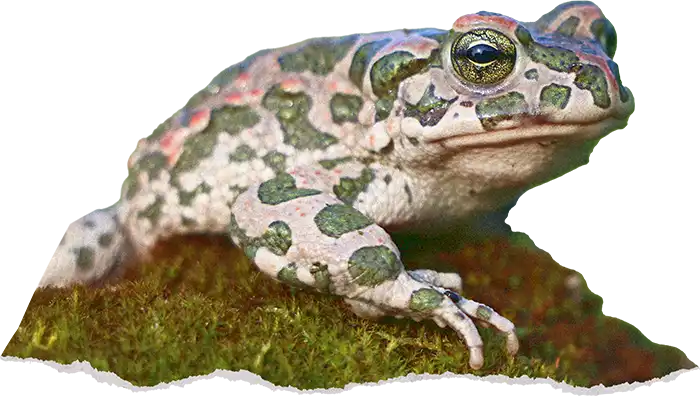
Endangered Species: The Low Down
Learn about the who, where, and when of leveraging endangered species protection to achieve 30×30 goals.
- The Who
- The Where
- The When
Endangered species are not limited to just one country or region; their existence—or lack thereof—impacts ecosystems on a global scale. So, it should come as no surprise that the answer to “who should be responsible for endangered species protection?” is also global. Let’s start with:
Legal protections implemented by governments cannot be the standalone solution to species extinction challenges. Along with existing efforts being carried out by nonprofits, scientific institutions, local people, and community conservationists among others, entities that have an outsized impact on species endangerment must take an active role in finding a solution. These include:
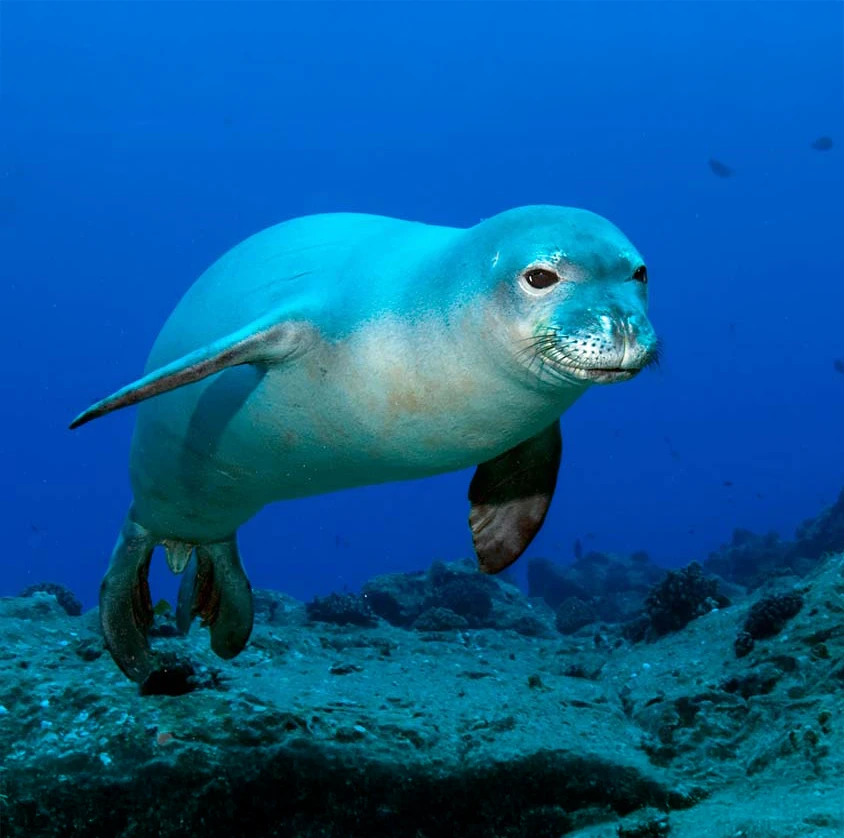
The endangered Hawaiian monk seal is the only seal native to Hawaii and one of just two mammals found exclusively in the islands, alongside the Hawaiian hoary bat. (IMAGE: Kent Backman/Wikimedia Commons)
Endangered species can be found worldwide with the most concentrated numbers in Asia (more than 2,100 endangered native species) and the Americas.10“Leading countries with the most threatened species worldwide as of 2024,” Statista ≫ These species are largely found in regions and countries with high levels of biodiversity, such as Brazil, Indonesia, Colombia, China, Mexico, Australia, and the United States.11”Most Biodiverse Country 2024,” World Population Review ≫
Endangered species protection should start with areas where critical habitat has been damaged or destroyed, negatively impacting species, but where it still can be restored. We start in our own backyards.
Marine Mammals of Maine | Maine
The first of its kind on the United States’ east coast, Marine Mammals of Maine’s Triage Center allows them to quickly address critically ill and injured seals stranded on Maine’s beaches and aid them through recovery until they are ready to be re-released into the wild. Learn more >>>
Born Free USA | International
Born Free USA runs multiple wildlife incident databases to track trapping and exotic wildlife-human interactions throughout the United States and around the world. Learn more >>>
West Shore Wildlife Center | Dover, Pennsylvania
West Shore Wildlife Center’s Coexist with Wildlife campaign teaches local Pennsylvanians how to properly interact with various native species, including bats, chipmunks, deer, racoons, raptors, and more. Learn more >>>
World Wildlife Fund | International
World Wildlife Fund and their international research partners are exploring a brand-new way to monitor biodiversity; one that’s far less invasive or labor-intensive than current scientific approaches. Learn more >>>
The recovery of an endangered species depends on when and how aggressively we implement real, meaningful change. Species population and ecosystem recovery takes time—sometimes, a lot of time (decades, if not centuries). Luckily, we know it is possible. The Endangered Species Act alone is credited for keeping 99% of its listed species from extinction, showing that humans can make changes necessary to protect species from eradication. Existing environmentally-positive solutions include:
Plastic Reduction
This is particularly true for single-use plastics which, today, are found in ecosystems worldwide and pose health risks to people and wildlife alike. Happening Now >>> The Ocean Cleanup
SUSTAINABLE HUSBANDRY, HUNTING, AGRICULTURE, & FISHING
Whether it’s growing crops or hunting for food, it’s important that we’re not taking more than any one ecosystem or habitat can provide. Keyword: balance. Happening Now >>> Shrimp Farming and Mangrove Regeneration (See also sustainable agriculture, sustainable fisheries)
REDUCTION OF CO₂ EMISSIONS VIA CLEAN ENERGY TRANSITION
Pollution and habitat loss due to fossil fuel consumption and the resulting carbon dioxide emissions are major players in species endangerment. From ocean acidification to changes in soil structure, too much carbon dioxide in our atmosphere wreaks havoc on plants, animals, and whole habitats alike.12”Indirect effects of rising CO2 levels on ecosystems more important than previously thought,” University of Southampton ≫ Therefore, a transition to a clean energy system, where energy is produced via clean solutions (solar, wind, geothermal, etc.) and accessed via a clean grid, would significantly reduce carbon dioxide emissions as well as risk for endangered and threatened species. Happening Now >>> Wildlife-Friendly Solar in North Carolina
“Renewable energy reduces a host of other environmental threats, such as mercury pollution that poisons fish and wildlife in our waters, acid rain that harms our lakes and forests, as well as smog and haze, damaging coal strip-mining, and toxic wastewater discharges from power plants.”
Get Involved
EVERYONE can help endangered species, and strong public support is one of the fastest ways to set change in motion, especially in the face of significant obstacles created by rapidly changing federal policy.
Explore below to learn more!
- Policy
- Education
- Support
- Bills
- Engage Congress
- Vote
The following bills supporting endangered species have been introduced in congress. Read through each bill below to learn what it’s about and its current status, then continue on to the “Engage Congress” tab to discover how to easily request your congressperson’s support for these pieces of legislation.
TIP: when looking at the bill name and number, “H.R.” stands for House of Representatives and “S” stands for Senate.
H.R.7795 – ProTECT Act of 2024
- Summary: Amends the Endangered Species Act to prohibit the taking of threatened or endangered species as trophies as well as banning the importation of endangered or threatened species trophies into the U.S.
- Status: As of 3/29/24 – Referred to the House Committee on Natural Resources.
S.1149 – Recovering America’s Wildlife Act of 2023 | H.R.7408 – America’s Wildlife Habitat Conservation Act
- Summary: Amends the Pittman-Robertson Wildlife Restoration Act to create funds for conservation management of those species with the greatest need as determined by State fish and wildlife departments.
- Status (S): As of 3/30/23 – Read twice and referred to the Committee on Environment and Public Works.
- Status (HR): As of 8/30/24 – Referred to the Subcommittee on Conservation, Research, and Biotechnology.
H.R.7999 – Wildlife Rescue, Rehabilitation, and Reintroduction Act of 2024
- Summary: Directs the Secretary of the Interior to establish a Wildlife Confiscations Network that incentivizes the rescue, rehabilitation, and appropriate reintroduction of threatened and endangered animals.
- Status: As of 4/15/24 – Referred to the House Committee on Natural Resources.
For information on bills in Congress that are currently putting the EPA and our endangered species at risk, check out this list from EarthShare Partner Defenders of Wildlife. Reach out to your congressional representatives and tell them to vote NO!
Not sure who represents you in congress? Follow these quick steps to find your congressional representatives and how to contact them:
- Click here and input your home address, then click the search icon.
- Under the name of the representative you want to reach, look for the section titled “Contact.”
- To make a phone call, copy the phone number provided.
- To send an email (or other form of outreach), select the blue hyperlinked word “contact.”
- This will take you to a page with different methods for reaching your representative.
To make the process as simple as possible, we’ve provided you with email and phone call templates. Simply fill in the blanks with your information and then reach out to your representatives!
Your vote means something. It’s your chance to voice your support for the people and policies you think will make a positive difference in your community and across the country.
Register to Vote
Not yet registered to vote? Get started:
It’s super easy! All you have to do is:
- Select the state or territory you live in
- Start your online voter registration
When registering, make sure you have a valid form of identification. This could be your Driver’s License, State ID, and/or Social Security Number.
Find Your Voting Location
Are you a new voter? Have you moved recently? Or maybe you just want to double check you know where you’re going? Find your voting location:
Remind Others to Vote
- Text election reminders to friends and family
- Snap that “I Voted” selfie and share it with the world (this simple act has been shown to increase voter turnout by 4.1%)
- Help others create a voting plan
- Sign up for programs like When We All Vote to help educate others on the importance of voting, important deadlines, and more

- The Issue
- Advocate
- Keep Learning
More education is needed to get people on board with widespread endangered species protection. Thanks to public-facing institutions like zoos, aquariums, wildlife preserves, and animal sanctuaries, more people than ever are able to get a first-hand glimpse at wildlife they can’t or rarely see in their daily lives. This builds a shared sense of empathy and compassion for these species. However, we need to do much more.
Educating Americans about the wildlife trade and illegal animal trafficking, the importance of these species—both animals and plants—to their natural habitats, and conservation efforts happening across the U.S. is critical to building the support needed for significant change.
Education also needs to happen at the legislative level. Legislators (those in Congress and others with the power to make, pass, and interpret laws) need to have a firm understanding of the basic concept of healthy ecosystems and endangered species.
Share This Page
Help educate your network of friends, family and followers when you share this page and post about it on social media!
Explore Further
Interested in learning even more about the importance of protecting endangered species? We’ve compiled a list of key resources to help you move forward.
Experts
Meet the professionals fighting for biodiversity and endangered species protections throughout the U.S.
Learning Hubs
Dive deeper into the topic with more educational tools.
- Wildlife Guide | National Wildlife Federation
- Endangered Species Conservation Resources | NOAA Fisheries
Other Resources
- Incidents Databases | Born Free USA
- Illegal Tortoiseshell Trade | SEE Turtles
- Encyclopedia of Life | National Museum of Natural History
- Activist Toolkit | Born Free USA

- Nonprofit Limitations
- Donate
- Volunteer
Ask any nonprofit in America (and around the world) what their greatest two challenges are, and they are very likely to say the same things: funding and capacity.
Nonprofits striving to implement and advance endangered species protection throughout the U.S. and around the globe are no stranger to this. That’s why your support—be it financial or through volunteer work—makes an enormous difference. By supporting an organization with your time and/or money, you are helping to increase their impact, expand their reach, and make it easier for good to be done for our planet.
Donate to Nonprofits
Meet the vetted EarthShare Nonprofit Partners making a difference for endangered species protection and donate to their cause!
- Born Free USA | Fighting for a co-existent future where humans no longer exploit wild animals
- Amphibian and Reptile Conservancy, Inc. | Protecting endangered amphibians and reptiles in high priority habitats
- Bird Alliance of Oregon | Advocating for Oregon’s wildlife and essential habitats using a suite of conservation methods
- Bird Conservancy of the Rockies | Saving birds and their habitats science, education, and land stewardship
- Marine Mammals of Maine | Rescuing and rehabilitating marine mammals and sea turtles along the coast of Maine
- NatureServe | Collecting, analyzing, and delivering biodiversity data to inform conservation action
- Ohio Wildlife Rehabilitators Association | Promoting Ohio wildlife conservation by providing resources to rehabilitators, educators, and the community
- SEE Turtles | Providing funding, resources, education, and tools to protect endangered sea turtle species
- West Shore Wildlife Center | Offering emergency wildlife rehabilitation services for all native Pennsylvania species
- World Wildlife Fund | Working in nearly 100 countries to deliver innovative solutions that help humans and wildlife thrive
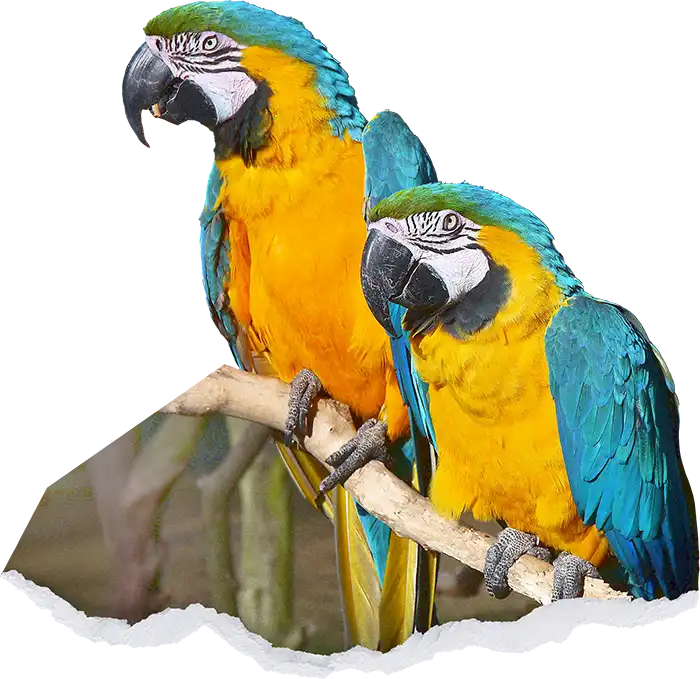
- Policy
- Education
- Support
- Bills
- Engage Congress
- Vote
The following bills supporting endangered species have been introduced in congress. Read through each bill below to learn what it’s about and its current status, then continue on to the “Engage Congress” tab to discover how to easily request your congressperson’s support for these pieces of legislation.
TIP: when looking at the bill name and number, “H.R.” stands for House of Representatives and “S” stands for Senate.
H.R.7795 – ProTECT Act of 2024
- Summary: Amends the Endangered Species Act to prohibit the taking of threatened or endangered species as trophies as well as banning the importation of endangered or threatened species trophies into the U.S.
- Status: As of 3/29/24 – Referred to the House Committee on Natural Resources.
S.1149 – Recovering America’s Wildlife Act of 2023 | H.R.7408 – America’s Wildlife Habitat Conservation Act
- Summary: Amends the Pittman-Robertson Wildlife Restoration Act to create funds for conservation management of those species with the greatest need as determined by State fish and wildlife departments.
- Status (S): As of 3/30/23 – Read twice and referred to the Committee on Environment and Public Works.
- Status (HR): As of 8/30/24 – Referred to the Subcommittee on Conservation, Research, and Biotechnology.
H.R.7999 – Wildlife Rescue, Rehabilitation, and Reintroduction Act of 2024
- Summary: Directs the Secretary of the Interior to establish a Wildlife Confiscations Network that incentivizes the rescue, rehabilitation, and appropriate reintroduction of threatened and endangered animals.
- Status: As of 4/15/24 – Referred to the House Committee on Natural Resources.
For information on bills in Congress that are currently putting the EPA and our endangered species at risk, check out this list from EarthShare Partner Defenders of Wildlife. Reach out to your congressional representatives and tell them to vote NO!
Not sure who represents you in congress? Follow these quick steps to find your congressional representatives and how to contact them:
- Click here and input your home address, then click the search icon.
- Under the name of the representative you want to reach, look for the section titled “Contact.”
- To make a phone call, copy the phone number provided.
- To send an email (or other form of outreach), select the blue hyperlinked word “contact.”
- This will take you to a page with different methods for reaching your representative.
To make the process as simple as possible, we’ve provided you with email and phone call templates. Simply fill in the blanks with your information and then reach out to your representatives!
Your vote means something. It’s your chance to voice your support for the people and policies you think will make a positive difference in your community and across the country.
Register to Vote
Not yet registered to vote? Get started:
It’s super easy! All you have to do is:
- Select the state or territory you live in
- Start your online voter registration
When registering, make sure you have a valid form of identification. This could be your Driver’s License, State ID, and/or Social Security Number.
Find Your Voting Location
Are you a new voter? Have you moved recently? Or maybe you just want to double check you know where you’re going? Find your voting location:
Remind Others to Vote
- Text election reminders to friends and family
- Snap that “I Voted” selfie and share it with the world (this simple act has been shown to increase voter turnout by 4.1%)
- Help others create a voting plan
- Sign up for programs like When We All Vote to help educate others on the importance of voting, important deadlines, and more

- The Issue
- Advocate
- Keep Learning
More education is needed to get people on board with widespread endangered species protection. Thanks to public-facing institutions like zoos, aquariums, wildlife preserves, and animal sanctuaries, more people than ever are able to get a first-hand glimpse at wildlife they can’t or rarely see in their daily lives. This builds a shared sense of empathy and compassion for these species. However, we need to do much more.
Educating Americans about the wildlife trade and illegal animal trafficking, the importance of these species—both animals and plants—to their natural habitats, and conservation efforts happening across the U.S. is critical to building the support needed for significant change.
Education also needs to happen at the legislative level. Legislators (those in Congress and others with the power to make, pass, and interpret laws) need to have a firm understanding of the basic concept of healthy ecosystems and endangered species.
Share This Page
Help educate your network of friends, family and followers when you share this page and post about it on social media!
Explore Further
Interested in learning even more about the importance of protecting endangered species? We’ve compiled a list of key resources to help you move forward.
Experts
Meet the professionals fighting for biodiversity and endangered species protections throughout the U.S.
Learning Hubs
Dive deeper into the topic with more educational tools.
- Wildlife Guide | National Wildlife Federation
- Endangered Species Conservation Resources | NOAA Fisheries
Other Resources
- Incidents Databases | Born Free USA
- Illegal Tortoiseshell Trade | SEE Turtles
- Encyclopedia of Life | National Museum of Natural History
- Activist Toolkit | Born Free USA

- Nonprofit Limitations
- Donate
- Volunteer
Ask any nonprofit in America (and around the world) what their greatest two challenges are, and they are very likely to say the same things: funding and capacity.
Nonprofits striving to implement and advance endangered species protection throughout the U.S. and around the globe are no stranger to this. That’s why your support—be it financial or through volunteer work—makes an enormous difference. By supporting an organization with your time and/or money, you are helping to increase their impact, expand their reach, and make it easier for good to be done for our planet.
Donate to Nonprofits
Meet the vetted EarthShare Nonprofit Partners making a difference for endangered species protection and donate to their cause!
- Born Free USA | Fighting for a co-existent future where humans no longer exploit wild animals
- Amphibian and Reptile Conservancy, Inc. | Protecting endangered amphibians and reptiles in high priority habitats
- Bird Alliance of Oregon | Advocating for Oregon’s wildlife and essential habitats using a suite of conservation methods
- Bird Conservancy of the Rockies | Saving birds and their habitats science, education, and land stewardship
- Marine Mammals of Maine | Rescuing and rehabilitating marine mammals and sea turtles along the coast of Maine
- NatureServe | Collecting, analyzing, and delivering biodiversity data to inform conservation action
- Ohio Wildlife Rehabilitators Association | Promoting Ohio wildlife conservation by providing resources to rehabilitators, educators, and the community
- SEE Turtles | Providing funding, resources, education, and tools to protect endangered sea turtle species
- West Shore Wildlife Center | Offering emergency wildlife rehabilitation services for all native Pennsylvania species
- World Wildlife Fund | Working in nearly 100 countries to deliver innovative solutions that help humans and wildlife thrive

Where to Start
We’ve curated a list of nonprofits doing work with endangered species in the United States and around the world. Learn more about the incredible work they’re doing and show your support.
Check out these orgs!
Born Free USA * | Fighting for a co-existent future where humans no longer exploit wild animals
Amphibian and Reptile Conservancy, Inc. | Protecting endangered reptiles and amphibians in high priority habitats
Bird Alliance of Oregon | Advocating for Oregon’s wildlife and essential habitats using a suite of conservation methods
Bird Conservancy of the Rockies | Saving birds and their habitats science, education, and land stewardship
Marine Mammals of Maine | Rescuing and rehabilitating marine mammals and sea turtles along the Maine coast
NatureServe | Collecting, analyzing, and delivering biodiversity data to inform conservation action
Ohio Wildlife Rehabilitators Association | Promoting Ohio wildlife conservation by providing resources to rehabilitators, educators, and the community
SEE Turtles | Providing funding, resources, education, and tools to protect endangered sea turtle species
West Shore Wildlife Center | Offering emergency wildlife rehabilitation services for all native Pennsylvania species
World Wildlife Fund | Working in nearly 100 countries to deliver innovative solutions that help humans and wildlife thrive
* EARTHSHARE 30×30 PARTNER
Created as part of the Mosaic 2023 Movement Infrastructure grant program
Share your thoughts on The 30×30 Project website
©2025 EarthShare. All rights reserved. EarthShare is a registered 501(c)(3) nonprofit.
